World War I, Post-War Settlements, the Russian Revolution, the Interwar Years, the Rise of Authoritarianism, and World War II (c. 1900-1950) || AP WORLD HISTORY
1/70
There's no tags or description
Looks like no tags are added yet.
Name | Mastery | Learn | Test | Matching | Spaced |
|---|
No study sessions yet.
71 Terms
Socialism v. Communism
Communism is a form of complete socialism in which the people own all production and property.
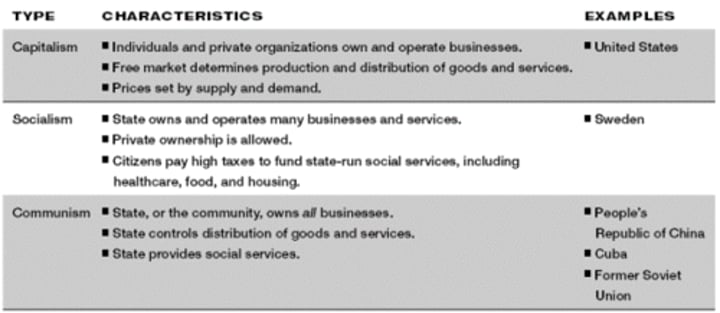
Socialism
Socialism is political movements help with spreading out wealth and property to everyone. Socialism is an economic system in which major industries are owned by the workers themselves, rather than by private businesses or the state. It is different from capitalism, where private actors, like business owners and shareholders, can own the means of production for themselves.
Communism
a political theory derived from Karl Marx, advocating class war and leading to a society in which all property is publicly owned and each person works and is paid according to their abilities and needs.
Capitalism
an economic and political system in which a country's trade and industry are controlled by private owners for profit, rather than by the state.
Balfour Declaration
British document that promised land in Palestine as homeland for Jews in exchange for Jews help in WWI
League of Nations
A world organization established in 1920 to promote international cooperation and peace. It was first proposed in 1918 by President Woodrow Wilson, although the United States never joined the League. Essentially powerless, it was officially dissolved in 1946.
Treaty of Versailles
the treaty imposed on Germany by the Allied powers in 1920 after the end of World War I which demanded exorbitant reparations from the Germans
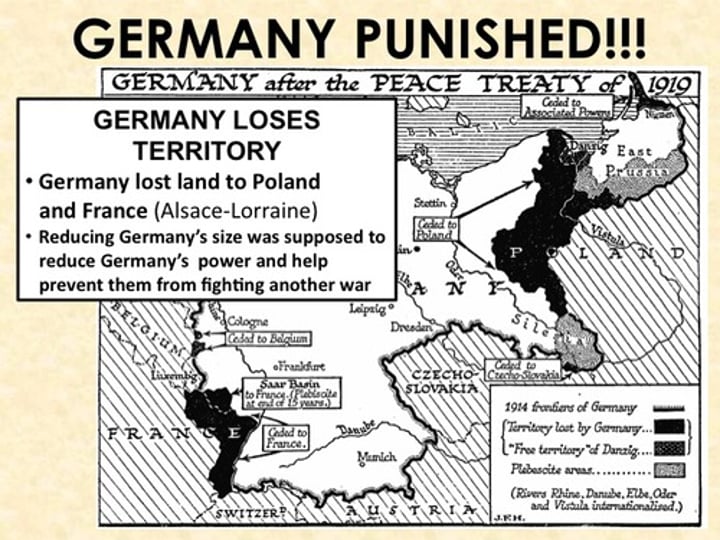
Archduke Francis Ferdinand
heir to the throne of Austria Hungary; assassinated by Gavrilo Princip, a bosnian serb.; sparked WWI
Triple Alliance/Central Powers
Germany, Austria-Hungary, Italy
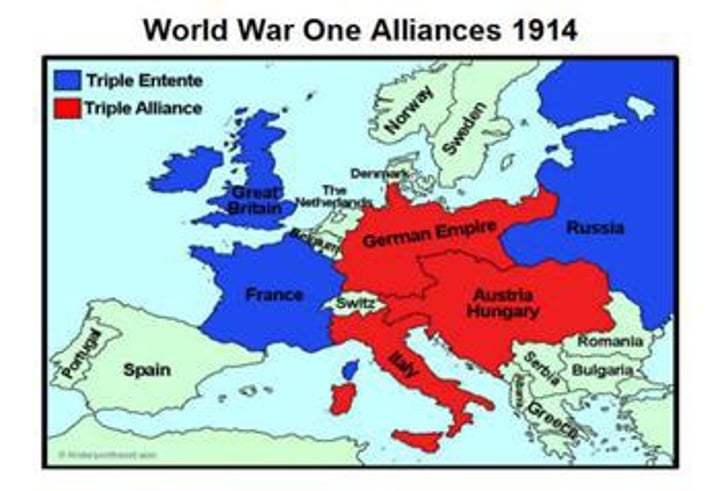
Triple Entente/Allied Powers
Great Britain, France, Russia, later US
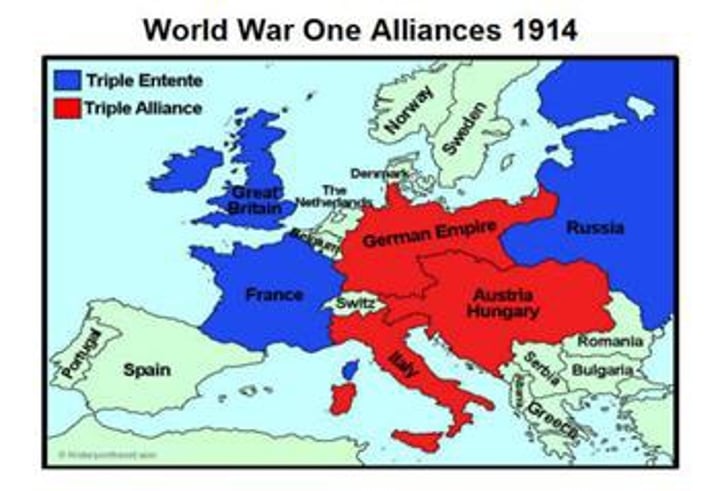
Gavrilo Princip and the Black Hand
The Man who was responsible for killing the Archduke Franz Ferdinand, who ruled over Austria-Hungary. His assassination was the immediate cause of World War I. The Black Hand was the organization in which Princip part of.
Trench Warfare
A form of warfare in which opposing armies fight each other from trenches dug in the battlefield.
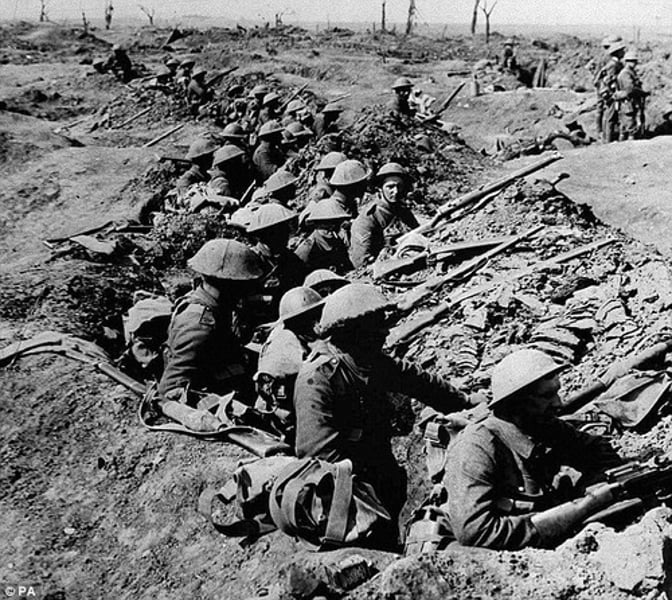
Tsar Nicholas II
Last Tsar of Russia and then end of the Romanov line. Was executed along with the rest of his family under the order of Lenin.
Propaganda
Ideas spread to influence public opinion for or against a cause.
Bolsheviks
A party of revolutionary Marxists, led by Vladimir Lenin, who seized power in Russia in 1917.
Woodrow Wilson
President of the United States (1913-1921) and the leading figure at the Paris Peace Conference of 1919. He was unable to persuade the U.S. Congress to ratify the Treaty of Versailles or join the League of Nations.
Fourteen Points
The war aims outlined by President Wilson in 1918, which he believed would promote lasting peace; called for self-determination, freedom of the seas, free trade, end to secret agreements, reduction of arms and a league of nations.
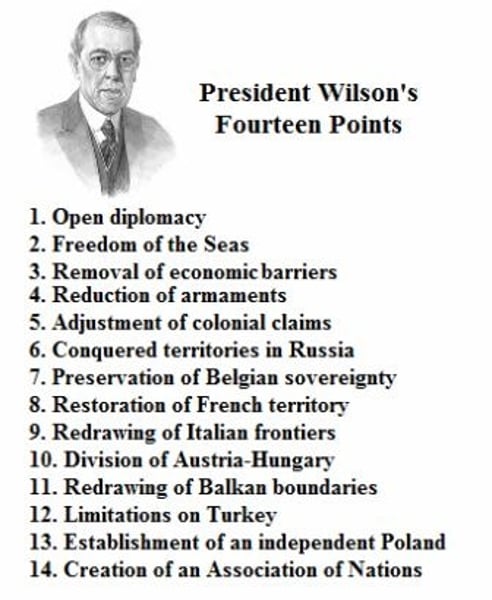
Democratic-Socialism
A socialist form of government that guarantees civil liberties such as freedom of speech and religion. Citizens determine the extent of government activity through free elections and competitive political parties.
Self-determination
the right of people to choose their own form of government
Sykes-Picot Agreement (1916)
Secret agreement made during World War I between Great Britain and France, with the ok of Russia, for the dismemberment of the Ottoman Empire. The agreement led to the division of Turkish-held Syria, Iraq, Lebanon, and Palestine into various French- and British-administered areas.
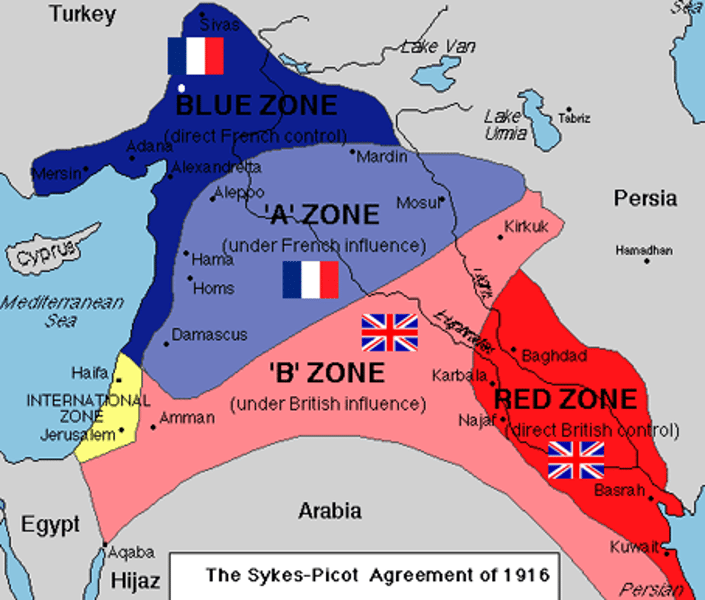
Kemal Mustafa Ataturk
founder of the Republic of Turkey; creates a secular/modernizing Turkish nation, (language reform, bans veil, removal of religion from public life, military as the safeguard of the republic.
Theodor Herzl
Austrian journalist and Zionist; formed World Zionist Organization in 1897; promoted Jewish migration to Palestine and formation of a Jewish state
Zionism
A movement founded in the 1890s to promote the establishment of a Jewish homeland in Palestine.
Land reform
Breakup of large agricultural holdings for redistribution among peasants
Alexander Kerensky and the Provisional government
Alexander Kerensky: Prime Minister of the Provisional Government until its overthrow by the October Revolution, the Provisional Government was the in-between government between the Czar and the Bolsheviks
Alexander Kerensky
Headed the Provisional Government in 1917. Refused to redistribute confiscated landholdings to the peasants. Thought fighting the war was a national duty.
Provisional government
A temporary government created by the Duma after the abdication of the czar; it made the decision to remain in World War One, costing it the support of the soviets and the people.
Vladimir Lenin and the Bolsheviks
Lenin was a Russian Marxist revolutionary and communist politician. He was the leader of the Bolsheviks and headed the Soviet state during its initial years and worked to create a socialist economic system. The Bolsheviks were a mass organization consisting primarily of workers under a democratic internal hierarchy and considered themselves the leaders of the working class.
Leon Trotsky
Russian revolutionary intellectual and close adviser to Lenin. A leader of the Bolshevik Revolution (1917), he was later expelled from the Communist Party (1927) and banished (1929) for his opposition to the authoritarianism of Stalin
New Economic Policy (NEP)
Lenin's 1921 policy to re-establish limited economic freedom in an attempt to rebuild agriculture and industry in the face of economic disintegration
Union of Soviet Socialist Republics
Federal system of socialist republics established in 1923 in various ethnic regions of Russia; firmly controlled by Communist party; diminished nationalities protest under Bolsheviks; dissolved 1991.
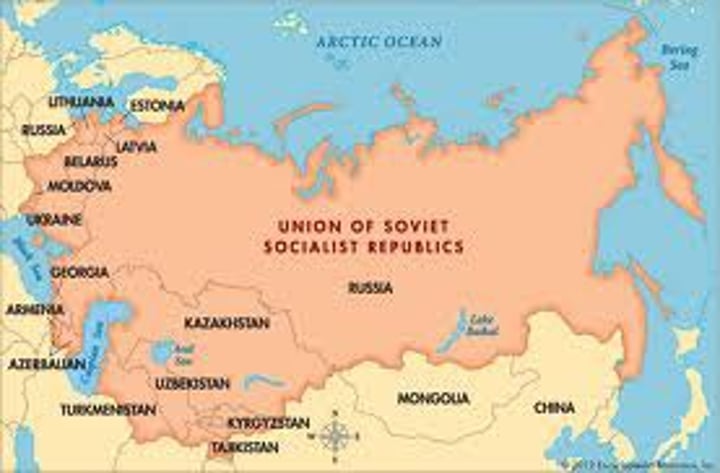
Joseph Stalin
Bolshevik revolutionary, head of the Soviet Communists after 1924, and dictator of the Soviet Union from 1928 to 1953. He led the Soviet Union with an iron fist, using Five-Year Plans to increase industrial production and terror to crush opposition
Great Purge/Great Terror
Stalin's campaign of political repression. Targets included the Old Bolsheviks, intellectuals, and top army officers; was a campaign of political repression, imprisonment and random terror in the Soviet Union which occurred from 1936 to 1938.
Gulags
Forced labor camps set up by Stalin in easter Russia. Dissidents were sent to the camps, where conditions were generally brutal. Millions died.
Kulaks
Rich peasants in the Russian Empire who owned larger farms and used hired labour. They were their own class.
Five Year Plans
Plans that Joseph Stalin introduced to industrialize the Soviet Union rapidly, beginning in 1928. They set goals for the output of steel, electricity, machinery, and most other products and were enforced by the police powers of the state.
Marxism
the economic and political theories of Karl Marx and Friedrich Engels that hold that human actions and institutions are economically determined and that class struggle is needed to create historical change and that capitalism will ultimately be superseded
Leninism
USSR's version of communism, workers and oppressed people's unite and overthrow capitalism and materialism
Stalinism
Stalin's government system that was acheived in the name of Communism but was more like totalitarianism; benefited only government and relied on terror tactics, secret police, bogus trials and assassination
Treaty of Brest-Litovsk
treaty between Russia and Germany that would end Russia's involvement in WWI in 1917
"Peace, Land, Bread"
The slogan used by Lenin to win the support of the people; Peace appealed to the soldiers; Land appealed to the peasants; and Bread appealed to the workers.
Collectives
large farms owned by the state and operated by peasants as a group
Collectivization
Creation of large, state-run farms rather than individual holdings; allowed more efficient control over peasants; part of Stalin's economic and political planning; often adopted in other Communist regimes.
The Great Depression
(HH) , starting with collapse of the US stock market in 1929, period of worldwide economic stagnation and depression. Heavy borrowing by European nations from USA during WW1 contributed to instability in European economies. Sharp declines in income and production as buying and selling slowed down. Widespread unemployment, countries raised tariffs to protect their industries. America stopped investing in Europe. Lead to loss of confidence that economies were self adjusting, HH was blamed for it
Kellogg-Briand Pact
Agreement signed in 1928 in which nations agreed not to pose the threat of war against one another; Signatories included France, the United States, the United Kingdom, Ireland, Canada, Australia, New Zealand, South Africa, India, Belgium, Poland, Czechoslovakia, Germany, Italy and Japan.
Fascism
A political system headed by a dictator that calls for extreme nationalism and racism and no tolerance of opposition
Mein Kampf
'My Struggle' by hitler, later became the basic book of nazi goals and ideology, reflected obsession
Censorship
restriction on access to ideas and information
Black Shirts
A private army under Mussolini who destroyed socialist newspapers, union halls, and Socialist party headquarters, eventually pushing Socialists out of the city governments of Northern Italy.
Lateran Accords of 1929
Agreement in which Mussolini recognized the sovereignty of Vatican City and established Catholicism as the state religion; in return, the papacy recognized the Italian state and encouraged Italians to support the Fascist regime.
Weimar Republic
The new German republic the in 1921 owed 33 billion annually to the allied reparations commission. In order to recover from its severe economic issues the annual fees were reduced each year depending on the level of German economic prosperity and Germany received large loans each year from the United States.
Nuremberg Laws
Placed severe restrictions of Jews, prohibited from marrying non- Jews, attending schools or universities, holding government jobs, practicing law or medicine or publishing books.
Kristallnacht
(Night of the Broken Glass) November 9, 1938, when mobs throughout Germany destroyed Jewish property and terrorized Jews.
Ghettos
Sections of towns and cities in which Jews were forced to live.
Rape of Nanjing (1937-1938)
Japanese attack on Chinese capital from 1937-1938 when Japanese aggressorts slaughtered 100,000 civilians and raped thousands of women in order to gain control of China.
Lebensraum
Hitler's expansionist theory based on a drive to acquire "living space" for the German people
New Deal
A series of reforms enacted by the Franklin Roosevelt administration between 1933 and 1942 with the goal of ending the Great Depression.
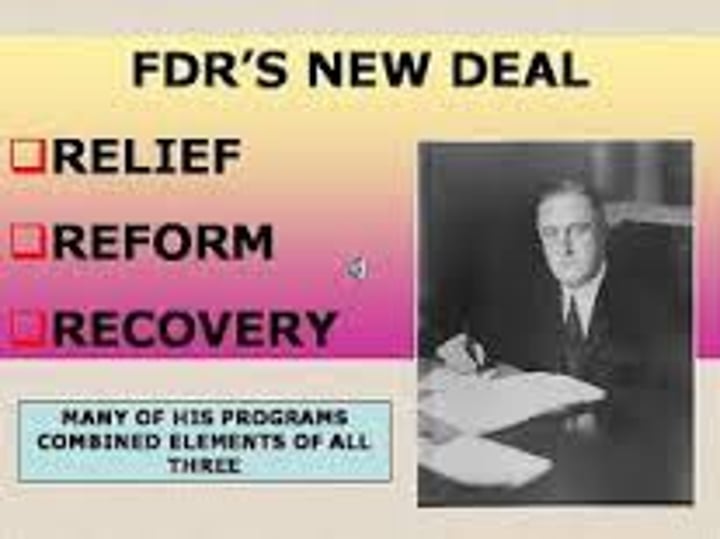
Nazi
a German member of Adolf Hitler's political party
Third Reich
The Third Republic of Germany which began Hitler's rule in 1933 and ended with his defeat in 1945
Gestapo
Nazi secret police
Anschluss
The union of Austria with Germany, resulting from the occupation of Austria by the German army in 1938.
Aggression
any physical or verbal behavior intended to hurt or destroy
Appeasement
A policy of making concessions to an aggressor in the hopes of avoiding war. Associated with Neville Chamberlain's policy of making concessions to Adolf Hitler.
Munich Conference/Agreement
1938-Meeting between British,French,and German leaders in which Germany was given control of the Sudetenland in exchange for German leader Hitler's promise to make no more claims on European territory
The Holocaust
A methodical plan orchestrated by Hitler to ensure German supremacy. It called for the elimination of Jews, non-conformists, homosexuals, non-Aryans, and mentally and physically disabled.
Blitzkrieg
"Lighting war", typed of fast-moving warfare used by German forces against Poland in 1939
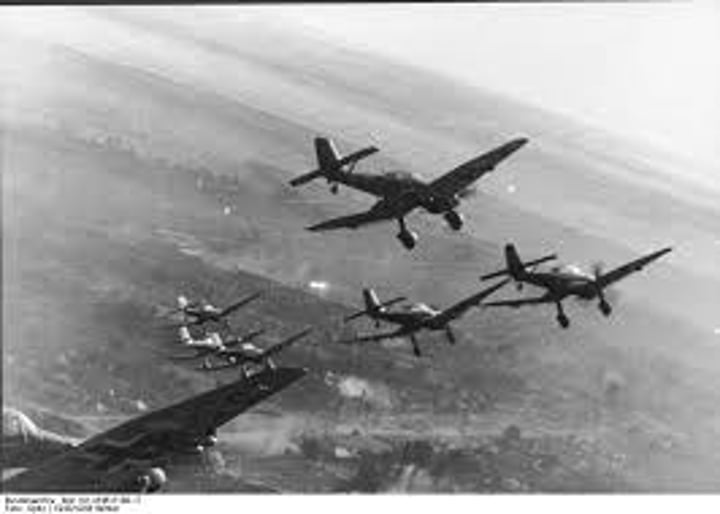
Vichy France
Southern Pro-Nazi French; govern themselves as loyal to nazis; traitors to the Free French in N. France
Total War
A conflict in which the participating countries devote all their resources to the war effort
Spark of WWI
Assassination of Archduke Franz Ferdinand
Spark of WWII
Hitler invaded Poland on Sept. 1st 1939. He used Blitzkrieg and this led to the soviets attacking eastern poland. Poland surrendered and the germans and soviets divided poland.
What long-term causes led to World War I?
1. Nationalism: Nationalistic fervor led to intense competition and rivalries between nations, particularly in the Balkans, where ethnic tensions were high.
2. Imperialism: European powers were engaged in a scramble for colonies and territories around the world, leading to competition and friction between imperial powers, especially in Africa and Asia.
3. Militarism: Militarism was rampant in Europe, with countries investing heavily in their militaries and glorifying war as a means of achieving national goals.
4. Alliance Systems: The formation of various military alliances, such as the Triple Entente (France, Russia, and Britain) and the Triple Alliance (Germany, Austria-Hungary, and Italy), created a situation where conflicts between individual nations could quickly escalate into a larger war.
5. Colonial Rivalries: Competing colonial interests often exacerbated tensions between European powers. Conflicts in Africa, the Middle East, and Asia were often proxy battles between imperial powers.
6. Economic Rivalries: Economic competition, particularly among industrialized nations, created tensions and rivalries. Access to markets, resources, and strategic waterways became points of contention.
7. The Balkan Powder Keg: The Balkans were a volatile region with numerous ethnic and nationalist tensions. The assassination of Archduke Franz Ferdinand of Austria-Hungary by a Bosnian Serb nationalist in Sarajevo in 1914 served as the spark that ignited the war.
8. Failure of Diplomacy: Diplomatic efforts to resolve conflicts and crises were often ineffective, leading to a lack of trust between nations and increasing the likelihood of war.
9. Arms Race: The arms race, particularly between Britain and Germany, led to the development of vast military arsenals and a sense of inevitability about conflict.
10. *Soci